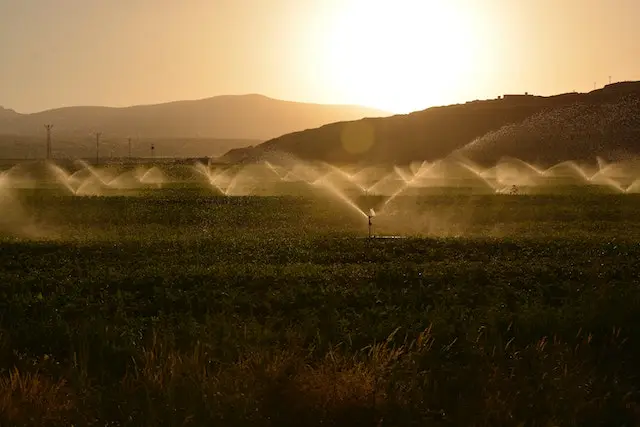Sod farming, also known as turf farming, is the process of growing & harvesting grass in the form of sod, which is pre-grown grass and soil held together by its roots. Sod is commonly used for quickly establishing lawns, sports fields, golf courses, and other landscaped areas.
If you have read my previous article on growing grass, then you must have learned about propagating grasses from turfs, which is known as turfing. In this article we will learn about how to grow grass to prepare turfs for lawn plantation.
Sod is just like any other cash crops such as Cashew, Tea, Cocoa, etc., hence to earn profit, you will need to have large area of land for sod plantation. It also requires high initial capital to establish a sod farm. But, as there is shortage of suppliers of sod in the market, you can earn good amount of profits easily.
You can sell harvested sod to landscaping companies, builders, sport facilities, golf courses, wholesale distributers, government bodies, etc. On an average, cost of sod varies from US $ 0.30 to 0.83 per square foot in the market. So let’s start learning about how to setup sod farm!
Table of Contents
Sod Farming Guide

Site Selection
You need to select a site with good drainage, having loamy soil rich in organic matter. Avoid planting sods in poorly drained, clayey or heavy soils. Also make sure water quality & availability in your region before cultivating sod. It is best to get your soil tested for best fertilizer recommendation. Soil pH rangng between 5.5 to 6.5 is considered ideal for sod.
Field Preparation
With the help of disc harrow, loosen the soil of your farm, remove clods, weeds, and other debris from the farm. After loosening the layer of the soil, with the help of graders, level your soil. Soil should be levelled well, then you can apply fertilizer in the soil before sowing of grasses.
Selection Of Grasses
There are two types of grass, that are warm season grass and cool season grass. Cool season grasses are Kentucky Bluegrass, Fescue Grass & Perennial Ryegrass while warm season grasses are Bermuda grass, Zoysia grass, St. Augustine Grass & Centipede grass.
Grass selection depends on your local climate and demand of sod variety in the market. If you are living in a region with cool temeprate climate, then plant cool season grasses, but in warm tropical climate grow warm season grasses such as Bermuda grasses.
However, plantation time for warm season and cool season grasses vary.
Sowing Time
You can sow seeds of cool season grasses in early spring. Or you can also sow them in fall when the soil is still warm from summer, and there’s usually enough moisture for germination. Warm season grasses can be sown from late spring to early spring which extends from April to June.
Cool-season grasses generally germinate best when the soil temperature is between 10° to 18°Celsius. While warm season grasses germinate best when the soil temperature is between 21° to 29°Celsius.
Seed Rate & Sowing
After site selection, field preparation, variety selection, the next step is sowing of grass seeds. You will need around 4-7 lbs of seed per 1,000 square feet that is 175-250 lbs per acre. As you will have to sow on a large area, therefore, use grass seeder machine to sow seeds in your farm.

After sowing of seeds, cover the entire field are with a biodegradable netting. At the time of harvesting sods, this net will provide stability to the sods and prevent them from breaking.
Irrigation
Give a light irrigation immediately after seed sowing. Thereafter, you will need to irrigate up to 5 to 15 centimetres depth once after every 7 days with the help of a sprinkler system. But make sure to avoid waterlogging, as it can damage your grass plantation.
Fertilizers
Farmer need to fertilize their farm four times in a year. Before sowing apply 10 Kilograms of organic manure such as Farm Yard Manure per 10 square meter area + 10 to 15 kilograms of lime & 10 Kilograms of SSP. After sowing you can apply the same fertilizer excluding lime thrice in a year. It will help in vigorous growth and establishment of lawn.
Mowing & Weeding
Once the grass reaches a certain desirable height, farmer should mow them regularly to encourage denser growth & root development. Make sure that you should not remove more than 1/3rd of the grass while mowing. Weed are also a serious problem in a sod farm.
For controlling broad leaved weeds you can spray 0.05% 2,4-D. And for narrow leaved weeds you can use 1.5 Kilograms of Atrazine per hectare. Removing weeds regularly is one of the major step in maintaing quality of the grass.
Harvesting
It takes around 20 to 30 days for grass seeds to germinate, and usually in about 12 to 14 months, sods will become ready for harvesting. With the help of a sod harvesting machine, you can easily harvest sod in required amount, shape and length that you need to supply to the market.
Transportation & Installation
After harvesting sods, it should be loaded in trucks carefully for transporting them to the desired location. Sod is laid out in a staggered pattern, and the seams are tightly butted together to create a seamless lawn. Once the sod is installed, it needs to be thoroughly watered to help it establish roots in its new location. Regular watering and maintenance are important during the first few weeks to ensure successful establishment.




